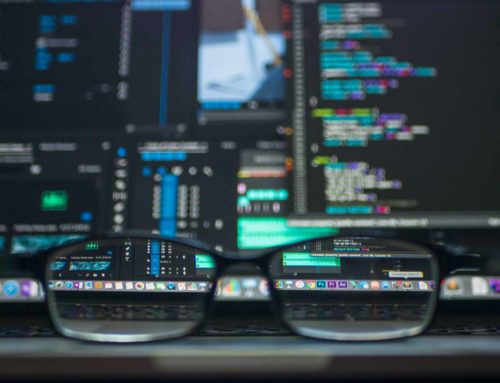Top 6 Software Technologies to Watch in 2018
The use of software technology in business is rapidly changing. As in the days of the personal computer and then later the mobile phone, the longer the product is in use, the greater number of innovative technologies that are being researched, developed, and introduced into the marketplace. Many of these innovations, although still early in their lifespan, can have a significant impact on your business today and in the long-term. We’ve compiled a short-list of 6 of the technologies on our radar that you should watch in 2018.
Developer Tools
The world of software development is ever evolving. However, only the best technologies take the appropriate amount of time before making official releases. In 2017, we’ve seen two of the most anticipated launches get their debut.
1. The resurgence of PHP
Well over a decade since the last major release of PHP 5, and after a false start with the vaporware PHP 6 project, the highly anticipated open source general-purpose scripting language PHP 7 was officially released in December 2017.
This server-side scripting language is used in many software applications and powers an estimated 80% of websites on the web, including such players such as Udemy, Tesla, Amazon and Facebook.
PHP 7 introduced much needed performance and security upgrades while adding new features that make development more cost efficient. This version also opens new opportunities in software development that previous versions did not allow. More than 88% of websites that use PHP are still using a version of PHP5. If your company is operating any software products using PHP 5, now would be a good time to look at either a potential migration, or if the opportunity fits, a re-factor.
Learn more about PHP7 on their official website.
2. Boostrap 4
After two years of development by the core team, Twitter Bootstrap 4 Beta was released in Aug 2017. Its appearance is making waves once again in the front-end software industry as an html/css framework for building responsive web apps. Along with new features and styles available to the framework, Bootstrap core now uses a C/C++ implementation of a sass compiler known as Libsass, which the framework’s developers proclaim as ‘crazy fast,’ and boasts a more explicitly clear syntax.
Another new introduction to the framework is a built-in feature called Flexbox. Flexbox makes layout options in CSS simpler and more flexible, allowing you to create a grid of flexbox containers that can be aligned and justified with ease. Bootstrap’s grid-system is designed to be mobile-first with 12 columns and five default responsive tiers.
Currently, the framework is still in beta, meaning that there are still the expected bugs with the system and it’s features. If you are thinking of starting a software project or upgrade your site to Bootstrap 4 be sure to read up on the documentation and join the community for release and feature updates.
Learn more about the Bootstrap 4 front-end framework on their official website.
Application Technologies
Innovation seems to be on everyone’s priority list this year. Although the number of unique innovations currently on everyone’s radar is quite impressive, there are four application technologies that are poised to make some major changes to the current business landscape. In no particular order they are:
3. Blockchain
With the recent hype around cryptocurrencies such as Bitcoin, you might be asking yourself how will this change my business? Well, there are two answers:
You may be familiar with Bitcoin, which is a cryptocurrency that is based off of a technology called Blockchain. At its core, blockchain technology is essentially “a distributed and undisputable transaction ledger”. Simply put, by nature of the technology, blockchain decentralizes ledger-type information then creates a copy and distributes that same information to many other users. With this information now decentralized, the contents of the ledger can no longer be modified, changed, or disputed.
The idea behind a cryptocurrency is that because the currency is no longer centrally regulated (meaning someone having the power to release or destroy currency), the value of the currency itself should be less subject to manipulation. However, there is currently a significant amount of debate and speculation regarding the legitimacy of these currencies. For example, the original creator of bitcoin has yet to be identified. There is a lot of dispute on both sides of the fence as many companies are avoiding cryptocurrencies as a form of payment for products or services.
Ethereum, is another blockchain based currency with a game changing feature, smart contracts. The real value of this specific blockchain algorithm is that it allows any type of logic to be added to the blockchain. While the smart contract logic can be added to the blockchain technology for a variety of applications, utilizing a decentralized ledger to maintain accountability of a contract is fairly new.
The decentralized ledger information can save a lot of potential costs where middle men would normally be required. As one example the real-estate industry requires many levels of validation to ensure that someone can purchase a house, along with the price and current state of the building and land. Smart contracts could validate all of that information. In addition, the distributed copies of data would ensure that both the seller and the buyer stay true to the terms of the agreement.
Cryptokitties, a popular blockchain based game released in 2017 by AxiomZen uniquely uses both the Ethereum cryptocurrency and smart contract logic as key components to a virtual pets game. The game’s algorithm procedurally generates a unique virtual pet and tracks its attributes along with owner information in the blockchain. Cryptokitties, allowing players to trade kitties using the Ethereum currency has been reported to account for more than 15% of all Ethereum traffic since its inception, with people spending more than $1M buying virtual cats.
Learn more about Cryptokitties on their official website.
4. AI and Machine Learning
Data without context is expensive and challenging to work with.
Artificial intelligence (AI) has many possible applications and implications. One of these applications is processing “Big data”, which has been a difficult problem for decades. In the early days, we solved these problems using compression algorithms, which allowed us to transmit more data faster but that didn’t solve the problem of processing the data. Now, with the wider adoption of data collection, transmission devices and interfaces through the emergence of smartphones, computer managed vehicles, and the Internet of things (IoT), we are left with the problem of too much unstructured data.
Data without context is expensive and challenging to work with. AI can be leveraged to identify context where it is lacking. This is primarily where deep learning shines, taking massive amounts of raw data and through interpretation and interpolation structuring it to create context making it easier and more cost effective to work with.
For instance, with topical research, consider how much time would be saved if you were able to ask a device a question and have it anticipate and curate the information, prioritizing the specific details that you needed? Better yet, perhaps the device could guide you to ask the right question. Google’s search interface has been improving in this area for years with snippets being more relevant than ever. AI technologies being used in a search capacity are being developed now for consumer use, with Amazon’s Alexa, Google’s Home, and Apple’s Siri among the more popular devices.
Learn more about AI and on this article by Mashable.
5. 5G
Netflix has boasted that it accounts for more than 35% of the internet traffic in North America, while streaming services in general have been noted to account for over 70% of peak traffic in North America. In addition, the amount of internet traffic being transferred over data lines is growing exponentially. Although there are innovative technologies dealing with this data now, the question for the growing number of mobile users, is how do we get a bigger pipe to fit more data through remote devices. 5G is the next evolution of mobile communication technology that can allow more data to be transmitted more quickly.
An additional impact that 5G can have is with the internet of things (IoT). Not only are users transmitting data across networks, but also networked devices that communicate such as smart appliances and self-driving vehicles. As consumer demand increases, the number of connected IoT devices will balloon and make use of more and more internet bandwidth. For example, as more drivers use AI-enabled vehicles like the Tesla, more data must be transferred from onboard computers, which means that our mobile data transmission capabilities must scale with the growing user base.
Learn more about 5G Mobile from this Consumer Reports article.
6. Virtual Reality, Augmented Reality, and Foveated Interaction
“Today’s current virtual experience technology is still missing the key interactions that would create a true immersive experience.”
The key factor with virtual, augmented, and mixed reality technology is that the race to become tomorrow’s leading company will be determined by user input and feedback technologies. Today’s current virtual experience technology is still missing the key interactions that would create a true immersive experience. Included in this is haptic response and eye tracking software.
In virtual environments, developers still need to use a smoke and mirrors concept to trick the user to see depth of field. The problem with this development concept is that the user has no control over what they want to focus in on. With eye tracking, the environment could potentially render the experience back to the user much more realistically and offer opportunities for more unique visual experiences.
In similar fashion to the optical experience, virtual reality is missing that human touch. As there are companies already working on haptic feedback technologies, once solved, this tactile element will help bridge the gap between virtual and reality much better than our imaginations could.
With this new perspective of viewing and interactive with objects in virtual space, the opportunities for efficiency are almost limitless.
Learn more about the latest in VR Technology on VentureBeat.
Technologies to bring your business forward are no longer limited to the methodology of adding more infrastructure and more IT staff. These six cutting edge innovations are examples of the way technology has rapidly progressed to serve up information, manage data, and create meaningful user experiences that you may need to consider for your business. Which of these technologies could your business benefit from the most?






